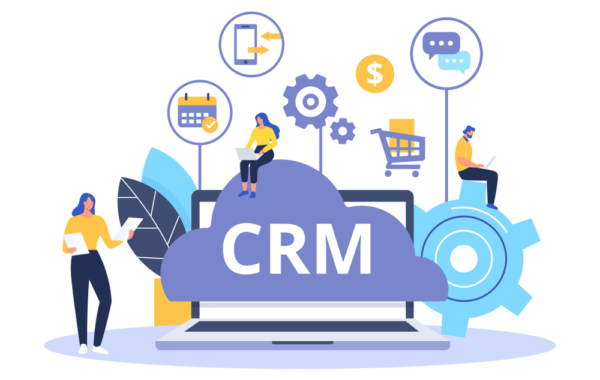
Top 4 Customer Retention Strategies for an eCommerce Store
The ultimate goal of any business is to make its customers happy – because customers are the ones that keep the business going and bring in the revenue. While attracting new clients, business owners also have to keep an eye on existing customers and develop a smart strategy for customer retention.
It is a well-known fact that attracting a new customer costs 5 times more than retaining an existing one. The benefits of having a long-lasting relationship with the customer are:
- Increased loyalty: existing customers know you and your brand – and they like it;
- More spending (due to loyalty towards the brand and established relationship);
- Word of mouth: this method is priceless for attracting new customers.
It therefore makes sense to build a stable and efficient customer retention strategy in order to encourage existing customers to continue shopping with you. It is especially true for the e-commerce industry when the customer can leave the website any minute and switch to the competitor’s website. There is even a known fact that, in e-commerce, an 80/20 rule applies: meaning, approximately 80% of your total revenue comes from 20% of your clients.
Why customer retention matters and when you need it the most
The biggest problem for any business is customer churn or loss of clients: i.e. last year online retail saw 21% in customer churn, according to Statista. To prevent it and decrease its rate, businesses adopt a set of activities – one of which is customer retention.
The attraction of new customers includes a number of issues: you have to find them, build trust, and involve them with the brand. Meanwhile, your existing customers already know and trust you – but that does not mean they will not choose the competition.
The 5% increase in customer retention leads to 25%-95% in profit, according to Invesp. The same study states that the probability of selling to an existing client is approximately 70%, while the probability of selling to a new client is up to 20% only. These numbers should be convincing enough to make you think about building a well-thought retention strategy.
However, you cannot just plan and implement it. Same as every business activity, the retention strategy should be applied at the correct time. In order to understand when it will work the best, you have to have a clear vision of a store lifecycle.
An e-commerce store lifecycle includes 5 stages, which is similar to an average small business growth, as defined by Harvard Business Review. These stages are:
- Just started: with no sales yet;
- Gaining traction: up to 5 sales a week;
- Consistent: 1 sale a day;
- Established: approx. 10 sales per day;
- Well-established: more than 10 sales per day.
Every stage is different in acquisition-vs-retention ratio. To put in short, as the sales grow, you will gradually follow on retention more. It will be 50:50 on the Established stage and then retention will become more important than acquisition.
It is important to understand the store lifecycle and know the correct time for every strategy because it directly impacts your sales and revenue. But it is also equally important to understand the core of your business and tailor the strategy correspondingly. Some stores may efficiently deploy the retention strategy only while others may benefit from constantly acquiring new customers. A good example would be McDonald’s and a local coffee shop. McDonald’s sees incredibly high client turnover and does not invest into retention heavily, though it does have loyalty programs. A local coffee shop, on the other hand, sees fewer clients and would want to encourage regular customers to come back.
Because every business is individual and unique, the marketing strategies would be unique for each one. However, some of the strategies have proved its efficiency within numerous businesses of any size and industry. Below are the top – 4 of the most widely-deployed customer retention strategies.
1. Personalization
Today businesses are all about customer-centricity, i.e. putting the customer’s interests first and foremost. That also implies well-thought personalization, which is aimed at making the customers feel special and valued.
A report by Deloitte revealed that 48% of shoppers agreed to wait longer for their order on terms that it would be personalized. A similar research by SalesForce stated that 57% of the shoppers would agree to exchange personal data in exchange for personalized offers and services. How well does it sound?
Personalization may come in many forms, depending on your store and your clients. In addition, you can be really creative when coming up with ideas on how to grab customers’ attention and offer them something special. If you’re feeling lost, check with experts (e.g. certified Magento developers).
Handwritten notes
In the era of digitization, handwritten notes/cards always look incredibly stylish and make you feel valued. Just think of that: a company’s CEO took his time and spent it on carefully crafted cards that he personally signed. Such gesture reflects your attitude towards customers perfectly and shows the most important thing for the seller-buyer relationship: that you care.
Personalized emails
If you think nobody reads emails anymore, you are wrong. It was estimated that for every $1 spent on email marketing you earn $38 back.
Email is a strong marketing tool, which can be used for user acquisition, retention, abandoned cart prevention and much more. The best thing about it is customization: you can tailor the content perfectly to your customers.
Incentives
Discounts, coupons, small free gifts – all these incentives add to great customer experience and increase the chance that the user will decide to buy from you.
Many e-commerce stores use the “anniversary” incentives, celebrating the customer’s 1 year (or more) with the store. As well, many stores have a special offer for user’s Birthday, which is another simple yet incredibly pleasant marketing technique.
2. Loyalty programs
This is another proven and efficient strategy that works perfectly well within any industry.
Bonus program
The main point of any loyalty program is to encourage users for continuous buying by offering them various bonuses in exchange. One of the most popular techniques is a bonus program that allows users to collect bonuses for each completed purchase (or action). For example, the Bright Star Kids store offers points not only for completed purchases but also for filling in the information or sharing on social media.
VIP membership
A VIP status is strongly associated with something extra and special – so why not use this psychological trick in your store?
The purchase of VIP membership may allow customers early access to some products, limited or special editions, faster delivery or any other incentive you may think about. A good example is the Amazon Prime membership, which, in 2016, generated 57% of Amazon’s revenue in North America.
3. Gamification
The element of game and competition is a serious psychological factor that can strongly affect our buying behavior.
In Canada, Tim Horton annually holds the “Roll Up the Rim” competition. Upon buying a hot drink, a client should roll up the cup’s rim and find out whether they won any prize. Prizes range drastically: from a donut to a brand-new car. And of course, after getting a free donut or coffee, you’d most likely decide to push your luck and try winning a car, right?
You can incorporate the spinning wheel with prizes into your website or mobile app or you can launch a competition where the first 20 customers will get certain incentives – the choice is up to you. What is important is the fact that such technology will motivate the users to come back to you and try their luck again and again.
4. Customer support
As Basecamp CEO, Jason Fried, once said, “If you take care of your existing customers, they will take care of your new customers”. Thus, it is important to create comfortable shopping conditions for your existing clients, from the item view to customer support.
Social media support
Today social media is as strong as ever and you should deploy it for the benefit of your business. Facebook Messenger is one of the most popular examples that open a chat with the brand as soon as you visit the page.
In order to monitor all your social pages and not miss a request from the client, you can utilize special tools that were designed for social media monitoring (or you can check them manually).
Chatbots
With the rise of Machine Learning, chart bots have steadily become an integral part of almost any website. These little robots significantly save time and improve customer experience by immediately suggesting an action for the user to perform and providing the required information within mere seconds.
In terms of customer support, bots can immediately offer an option for the user to choose: either obtain information on a certain issue or contact the company representative directly. But in any case, due to the bot’s ability to respond immediately, the user will have a feeling of a 24/7 support.
Multi-channel support
Enable your customers to contact you via multiple channels: Skype, text, email or whatever is suitable for them and you.
Remember that modern user expects a lightning-fast response and would not wait to receive an answer – so make sure there is always someone in your company who can communicate with the client. As well, make sure to have an FAQ section on your website and make it visible: it also contributes to saving the time of the user and helps him find a solution without reaching out for help.
Conclusion
In order to succeed in a highly competitive environment of an e-commerce industry, one has to focus on building long-lasting and reliable relationships with the customers and pay strong attention to their needs.
Once you find a suitable acquisition – retention ratio, which will be perfect for your business, you will be amazed at the sales growth and increased customer loyalty. Modern environment demands businesses to be bold, creative and customer-centric, deliver seamless user experience and exceed customer’s expectations by going an extra mile.
Author Bio:
Irina is an e-commerce and digital marketing observer, currently contributing to Onilab, with over 5 years of experience in writing.
Irina also helped numerous companies communicate their message across various channels through informative and compelling content.
Follow her on LinkedIn or Twitter.



